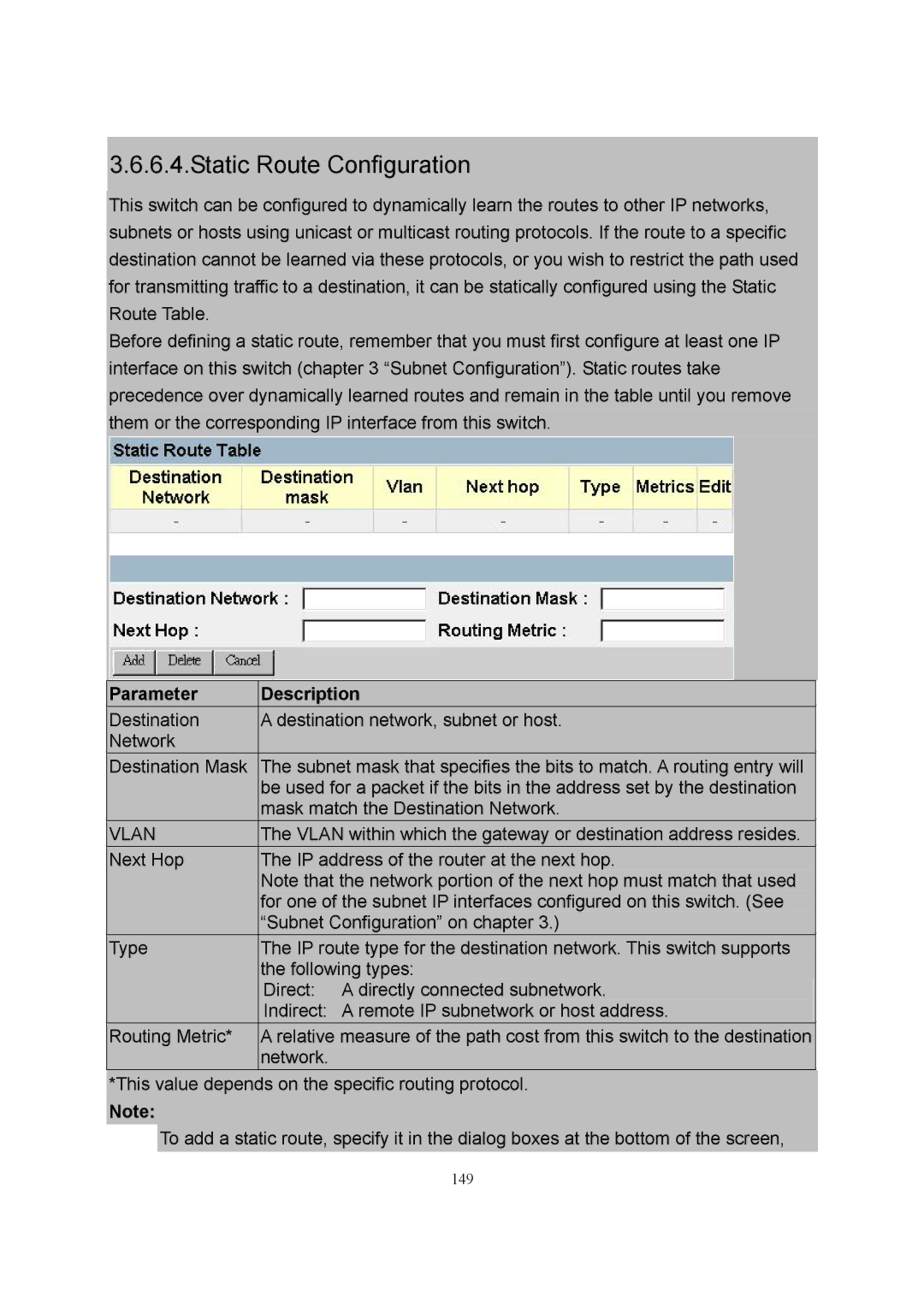
3.6.6.4.Static Route Configuration
This switch can be configured to dynamically learn the routes to other IP networks, subnets or hosts using unicast or multicast routing protocols. If the route to a specific destination cannot be learned via these protocols, or you wish to restrict the path used for transmitting traffic to a destination, it can be statically configured using the Static Route Table.
Before defining a static route, remember that you must first configure at least one IP interface on this switch (chapter 3 “Subnet Configuration”). Static routes take precedence over dynamically learned routes and remain in the table until you remove them or the corresponding IP interface from this switch.
Parameter | Description | |
Destination | A destination network, subnet or host. | |
Network |
|
|
Destination Mask | The subnet mask that specifies the bits to match. A routing entry will | |
| be used for a packet if the bits in the address set by the destination | |
| mask match the Destination Network. | |
VLAN | The VLAN within which the gateway or destination address resides. | |
Next Hop | The IP address of the router at the next hop. | |
| Note that the network portion of the next hop must match that used | |
| for one of the subnet IP interfaces configured on this switch. (See | |
| “Subnet Configuration” on chapter 3.) | |
Type | The IP route type for the destination network. This switch supports | |
| the following types: | |
| Direct: | A directly connected subnetwork. |
| Indirect: | A remote IP subnetwork or host address. |
Routing Metric* | A relative measure of the path cost from this switch to the destination | |
| network. | |
|
|
|
*This value depends on the specific routing protocol.
Note:
To add a static route, specify it in the dialog boxes at the bottom of the screen,
149
